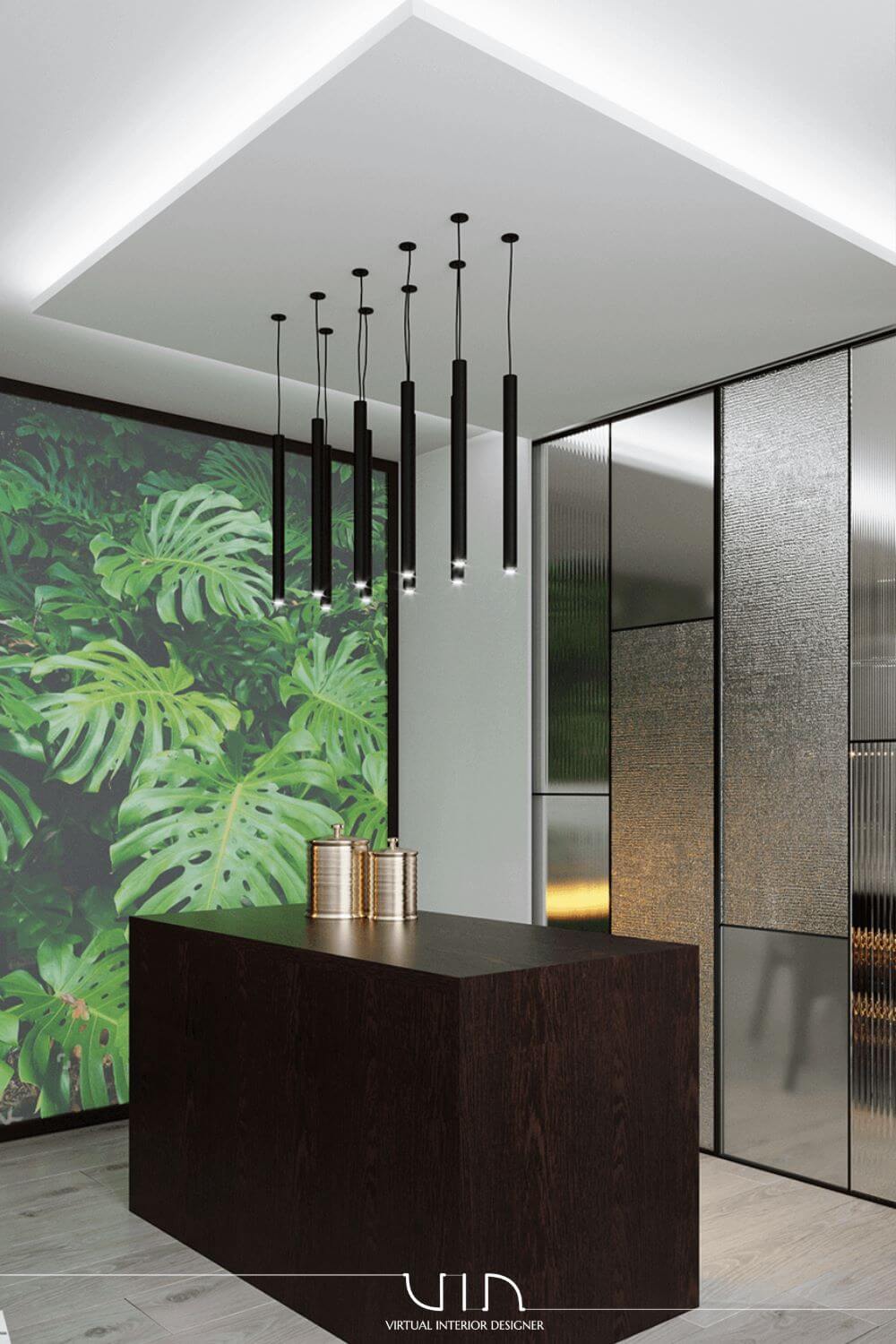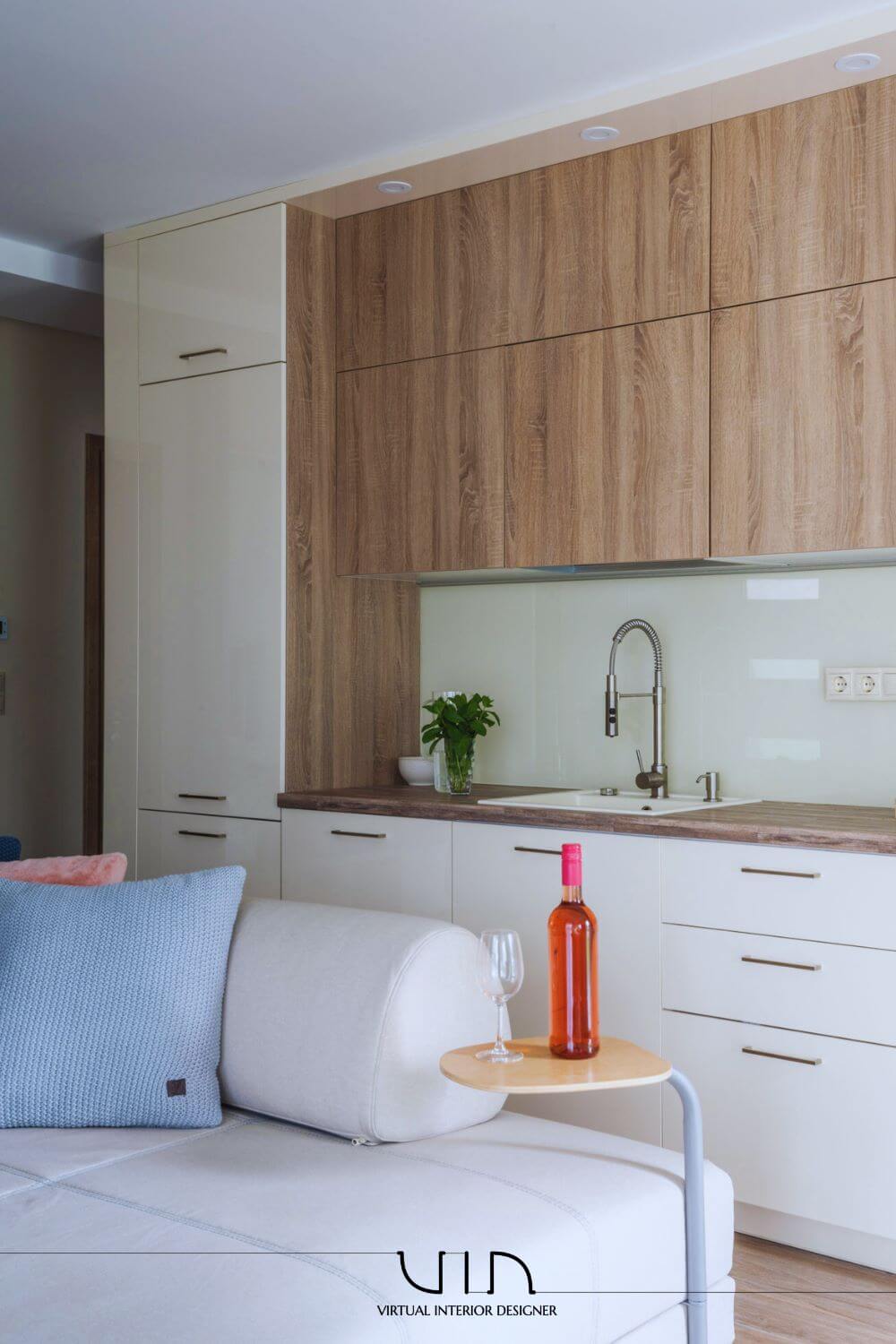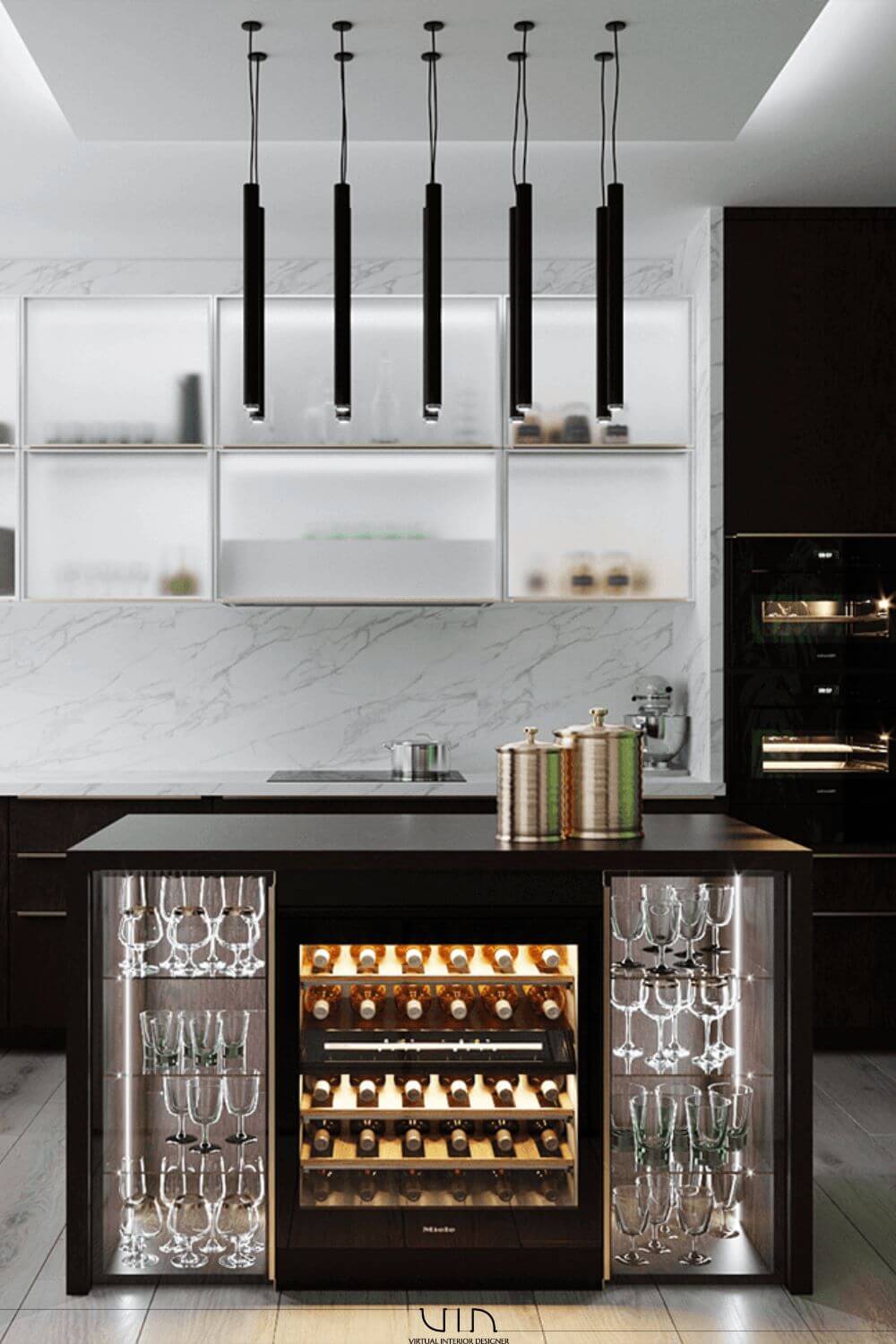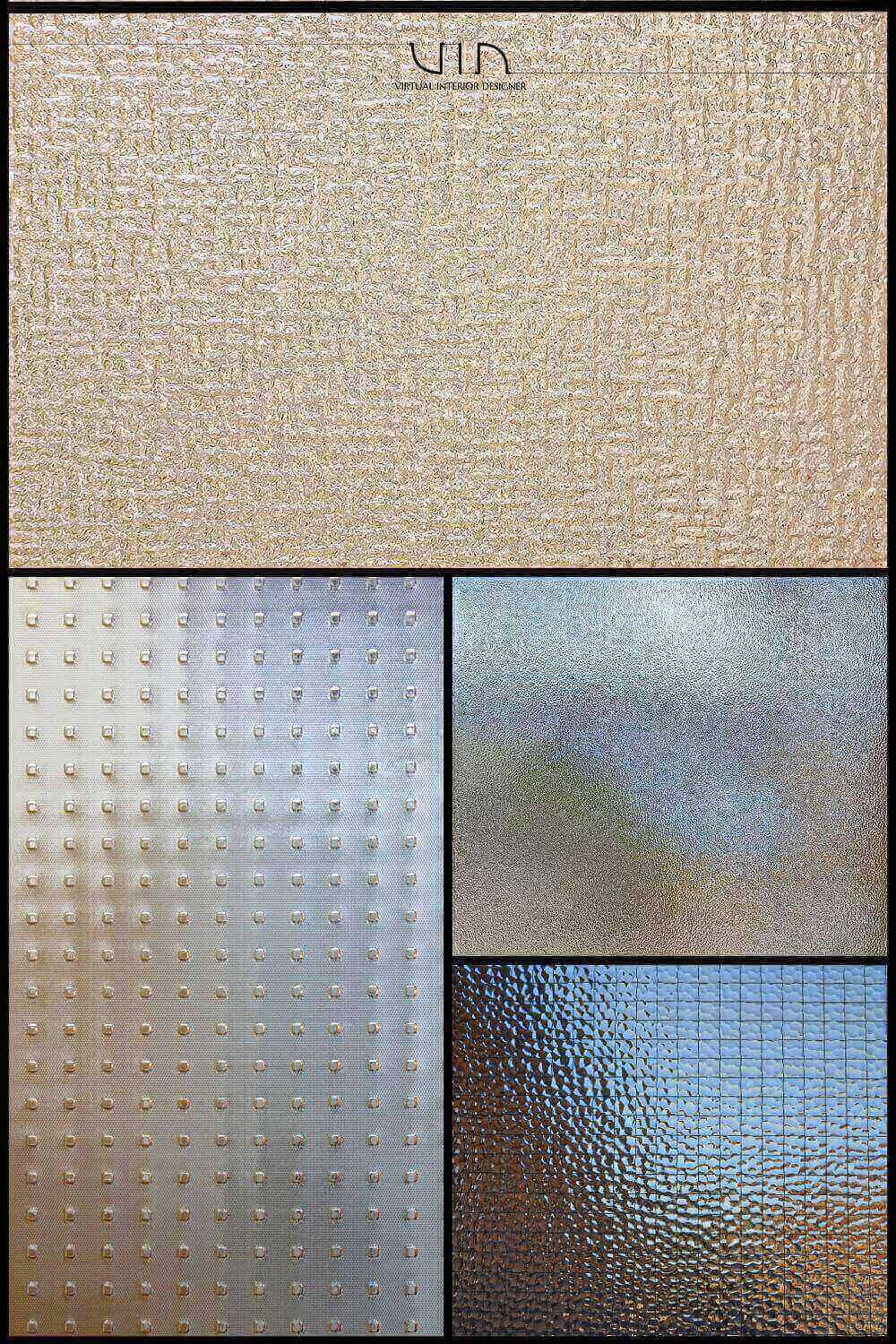Glass: Illuminating Spaces with Translucence and Reflection
If you want to add an exciting design to your kitchen using glass, you first need to familiarise yourself with the characteristics of glass and its place in the design. To do this, I’ve put together a bunch of the most important things to know.
In the realm of kitchen design, glass emerges as a transformative element, capable of infusing spaces with light, depth, and a modern edge. Beyond its functional use in windows and doors, glass, as a texture, brings an element of sophistication and openness to the kitchen, making it a key component in contemporary design aesthetics. This post delves into the versatile applications of glass in the kitchen, highlighting how this material can elevate the space with its unique properties of translucence, reflection, and colour.

Translucence: A Play of Light and Space
Glass’s most enchanting quality is its translucence, allowing light to pass through while providing varying levels of opacity. This characteristic makes glass an excellent choice for creating a sense of openness and fluidity within the kitchen. Glass-front cabinets are a classic example, offering a peek into the cabinet’s contents while keeping a clutter-free appearance. These cabinets can be outfitted with clear, frosted, or textured glass, each providing a different level of transparency and privacy. The interplay of light through these glass fronts not only highlights your fine china and glassware but also contributes to a brighter, airier kitchen environment.

Reflection: Expanding Spaces Visually
Glass surfaces have a unique ability to reflect light, contributing to a brighter and seemingly more expansive space. Mirrored and high-gloss glass backsplashes are particularly effective in this regard, especially in smaller kitchens. They reflect both natural and artificial light, enhancing the overall luminosity of the space and creating an illusion of depth. This reflective quality can also be leveraged through glass countertops or kitchen islands, which bounce light and add a sleek, modern touch to the design.
Colour and Texture: Adding Depth and Interest
While clear glass is widely used for its purity and simplicity, coloured and textured glass options offer additional layers of visual interest and personality. Coloured glass backsplashes or cabinet inserts can inject a vibrant pop of colour into the kitchen, serving as a striking focal point or complementing the overall colour scheme. Textured glass, on the other hand, adds a tactile dimension to the space. Options like ribbed, frosted, or hammered glass not only enhance privacy but also play with light in unique ways, casting intriguing shadows and adding a dynamic element to the kitchen’s design.

Integrating Glass: Balancing Aesthetics and Functionality
Incorporating glass into the kitchen requires a thoughtful balance between aesthetics and practicality. Glass surfaces are easy to clean and maintain, making them a hygienic choice for backsplashes and countertops. However, they can also show fingerprints and smudges more readily, necessitating regular cleaning to maintain their pristine appearance. When it comes to cabinetry, consider the visual weight of the items stored within glass-front cabinets, as too much clutter can detract from the desired effect of openness and lightness.

Adding Value with Glass
Glass, with its multifaceted properties, offers a wealth of possibilities for enhancing kitchen design through light, reflection, and colour. Whether employed in cabinetry, backsplashes, or countertops, glass introduces an element of elegance and modernity, transforming the kitchen into a luminous and inviting space. As with any design element, the key to successfully integrating glass lies in its thoughtful application, ensuring it complements the kitchen’s overall style while meeting the functional needs of the space. In the hands of a skilled designer, glass becomes more than just a material; it becomes a medium through which light, space, and beauty harmoniously converge.

